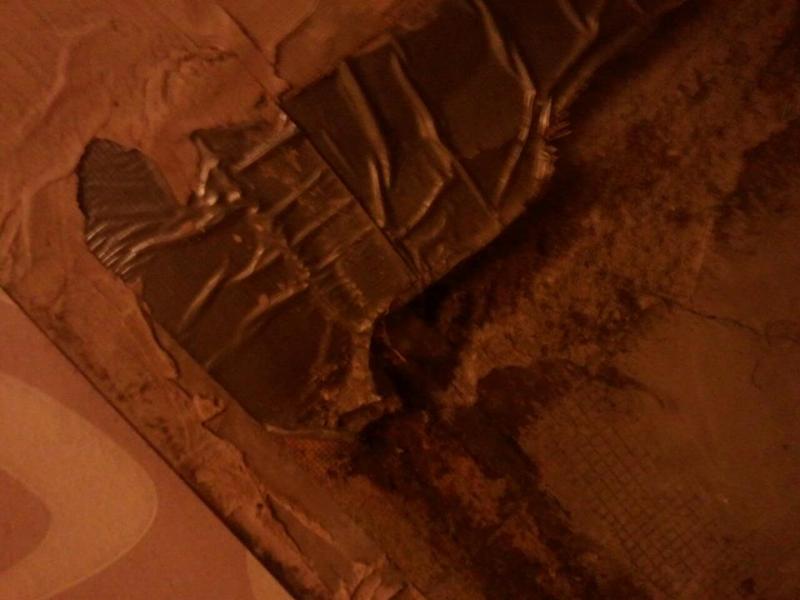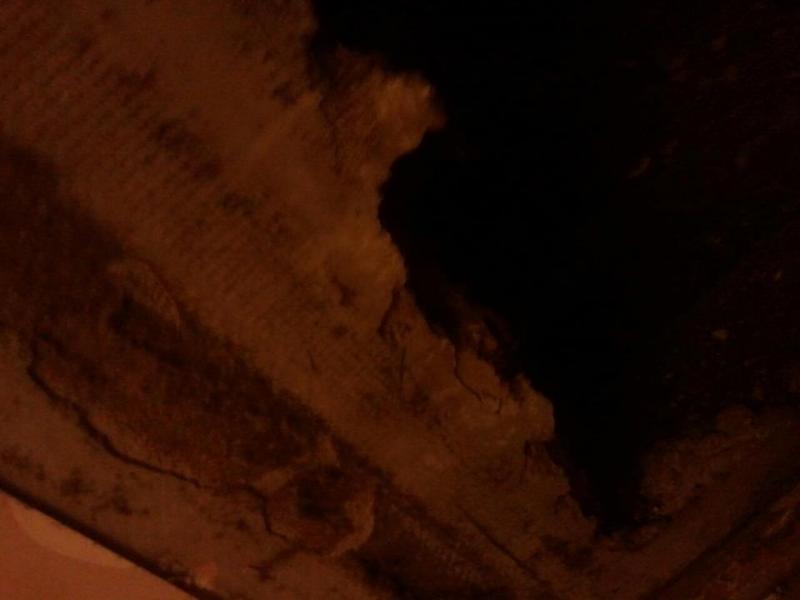- Joined
- 10 Oct 2012
- Messages
- 6
- Reaction score
- 0
- Country

Hi, can anyone tell from these pics whether this is or isn't asbestos?
The reason I'm worried that it may be asbestos is that the house is ex-council, built in the 1950s, so is exactly the sort of property that may contain asbestos.
In the living room, there is a hole in the chimney breast where a gas fire has been ripped out by the previous owner. The hole is crudely covered with a flap of wallpaper. The stuff I'm worried about looks like grey cement and it's a bit crumbly. Not fibrous as such, but it could be asbestos cement?
A more hopeful sign is that the space is mostly covered by a metal plate, which bears a few stickers saying things like "Sayes & Co Ltd... This gas appliance was installed by [initials], date: 3-7-01"
I find this more comforting, as surely a professional gas installing company in 2001 would have removed any asbestos and this is hopefully some kind of asbestos-free fire-resistant cement? What still worries me is that if they had actually found asbestos there, they may have considered that it was safer to leave it in situ than remove it, then simply added the metal plate on which to mount the gas fire?
Apologies if I'm being a clueless n00b here, I'm seeking peace of mind more than anything. If I'm right to be concerned about this material, can anyone advise on who I could approach for impartial advice about what to do next?
The reason I'm worried that it may be asbestos is that the house is ex-council, built in the 1950s, so is exactly the sort of property that may contain asbestos.
In the living room, there is a hole in the chimney breast where a gas fire has been ripped out by the previous owner. The hole is crudely covered with a flap of wallpaper. The stuff I'm worried about looks like grey cement and it's a bit crumbly. Not fibrous as such, but it could be asbestos cement?
A more hopeful sign is that the space is mostly covered by a metal plate, which bears a few stickers saying things like "Sayes & Co Ltd... This gas appliance was installed by [initials], date: 3-7-01"
I find this more comforting, as surely a professional gas installing company in 2001 would have removed any asbestos and this is hopefully some kind of asbestos-free fire-resistant cement? What still worries me is that if they had actually found asbestos there, they may have considered that it was safer to leave it in situ than remove it, then simply added the metal plate on which to mount the gas fire?
Apologies if I'm being a clueless n00b here, I'm seeking peace of mind more than anything. If I'm right to be concerned about this material, can anyone advise on who I could approach for impartial advice about what to do next?




